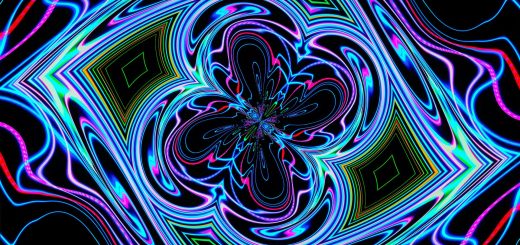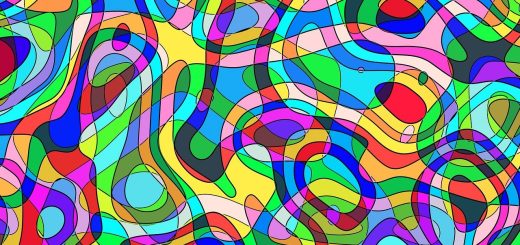Portuguese Mythological Art: Depictions & Interpretations

Before diving in, please note: This post is for informational purposes only. If you’d like to know more about how we approach topics, feel free to check out our friendly Disclaimer Page.
Hey there, amazing readers! 🖐️ Just a quick note: yes, we know there are a lot of ads here. Trust us, we get it—it’s not the prettiest look, but they help us keep this blog alive and kicking. Those pesky little ads cover the costs of all the behind-the-scenes magic, from hosting and tech stuff to creating content we hope you’ll love.
We’re committed to delivering quality posts, and your support (even just sticking around despite the ads) means everything to us. So, bear with us, and thanks for helping us keep the good vibes rolling. Now, on to the fun stuff! 😉
TRANSLATE BUTTON AT THE END OF THE ARTICLE
A Quick Overview
Portuguese Mythological Art is a rich and intricate form of artistic expression that has been a significant part of Portuguese culture for centuries.
It encompasses a wide range of themes, symbols, and artistic techniques that depict the myths and legends of Portugal.
From the fantastical creatures of folklore to the gods and goddesses of ancient mythology, Portuguese Mythological Art offers a glimpse into the cultural and spiritual beliefs of the Portuguese people throughout history.
This article will delve into the origins, themes, influences, symbolism, artists, techniques, interpretations, cultural significance, evolution, preservation, and contemporary applications of Portuguese Mythological Art.
Introduction to Portuguese Mythological Art
Portuguese Mythological Art refers to the visual representations of the myths, legends, and folklore of Portugal.
It often incorporates elements from ancient Portuguese mythology, as well as influences from other cultures that have shaped Portuguese artistic traditions over the centuries.
These artworks can be found in various forms, including paintings, sculptures, tapestries, and ceramics, each telling a unique story and capturing the imagination of viewers.
Portuguese Mythological Art serves as a window into the spiritual and cultural beliefs of the people of Portugal, offering insights into their connection to the natural world, their history, and their collective identity.
Origins of Portuguese Mythological Art
The origins of Portuguese Mythological Art can be traced back to ancient times when Portugal was inhabited by various Celtic, Roman, and Visigothic tribes, each with their own rich mythological traditions.
As Christianity spread throughout the region, many of these pagan beliefs were incorporated into the Christian canon, resulting in a unique fusion of mythological imagery in Portuguese art.
During the Age of Exploration, Portuguese artists were exposed to new cultures and mythologies from around the world, further enriching their artistic repertoire.
The Renaissance period also played a significant role in shaping Portuguese Mythological Art, as artists drew inspiration from classical mythology and incorporated it into their works.
Themes in Portuguese Mythological Art
Portuguese Mythological Art encompasses a wide range of themes, including the stories of ancient gods and goddesses, legendary heroes, mythical creatures, and supernatural beings.
Common motifs found in Portuguese Mythological Art include the Lusitanian gods and goddesses, such as Endovelicus and Ataegina, as well as creatures like the Barcelos Rooster and the Lobo Marinho (Sea Wolf).
These themes are often depicted in a symbolic and allegorical manner, reflecting the spiritual beliefs and cultural values of the Portuguese people.
Other prevalent themes in Portuguese Mythological Art include the exploration of nature, the cycle of life and death, and the eternal struggle between good and evil.
Influences on Portuguese Mythological Art
Portuguese Mythological Art has been influenced by a diverse array of cultural and artistic traditions, including Celtic, Roman, Visigothic, Moorish, and Renaissance influences.
The blending of these diverse influences has resulted in a unique and eclectic style that is distinctly Portuguese.
The Age of Exploration also played a significant role in shaping Portuguese Mythological Art, as artists were exposed to new mythologies and artistic techniques from around the world.
Additionally, the Baroque and Romantic movements had a profound impact on Portuguese Mythological Art, with their emphasis on emotion, drama, and spirituality shaping the way in which myths and legends were depicted in art.
Symbolism in Portuguese Mythological Art
Symbolism plays a crucial role in Portuguese Mythological Art, with artists using a wide range of symbols to convey deeper meanings and themes in their works.
Common symbols found in Portuguese Mythological Art include the cross, which represents Christianity and divine protection, the crescent moon, symbolizing femininity and intuition, and the serpent, which symbolizes wisdom and transformation.
These symbols are often used in conjunction with mythological figures and motifs to create complex and layered narratives that invite viewers to explore the deeper meanings behind the artwork.
Symbolism in Portuguese Mythological Art serves as a bridge between the material world and the spiritual realm, inviting viewers to contemplate the mysteries of existence and the nature of reality.
Artists of Portuguese Mythological Art
Throughout history, many talented artists have contributed to the rich tradition of Portuguese Mythological Art.
Some notable artists include Josefa de Óbidos, a Baroque painter known for her religious and mythological works, and Rafael Bordalo Pinheiro, a ceramicist famous for his whimsical depictions of Portuguese folklore.
Almada Negreiros, a modernist painter and writer, also made significant contributions to Portuguese Mythological Art with his innovative and avant-garde interpretations of mythological themes.
These artists and many others have helped to shape the diverse and vibrant landscape of Portuguese Mythological Art, each bringing their unique perspectives and artistic styles to the rich tapestry of myths and legends.
Techniques used in Portuguese Mythological Art
Portuguese Mythological Art encompasses a wide range of artistic techniques, including painting, sculpture, ceramics, tapestry, and fresco painting.
Traditional techniques such as oil painting, watercolor, and pastel are often used to create richly detailed and atmospheric depictions of mythological scenes.
Sculptors utilize materials such as marble, bronze, and wood to bring mythical creatures and figures to life, while ceramicists use techniques such as glazing, firing, and painting to create intricate and colorful representations of Portuguese folklore.
Tapestry weavers employ techniques such as weaving, dyeing, and embroidery to create large-scale, intricate tapestries that tell stories of gods, heroes, and monsters.
These diverse techniques come together to create a vibrant and dynamic artistic tradition that continues to evolve and inspire artists to this day.
Interpretations of Portuguese Mythological Art
Interpreting Portuguese Mythological Art involves delving into the rich tapestry of myths, legends, and symbols that have shaped Portuguese culture for centuries.
Artists often draw upon ancient mythology, folklore, and religious traditions to create works that explore themes of identity, spirituality, and the human experience.
Critics and scholars analyze Portuguese Mythological Art through various lenses, including historical, cultural, and psychological perspectives, seeking to unravel the deeper meanings and messages encoded within the artwork.
Viewers are encouraged to engage with Portuguese Mythological Art on both an intellectual and emotional level, allowing the stories and symbols to resonate with their own personal experiences and beliefs.
Cultural Significance of Portuguese Mythological Art
Portuguese Mythological Art holds immense cultural significance for the people of Portugal, serving as a tangible link to their history, traditions, and spiritual beliefs.
These artworks reflect the collective imagination and creativity of the Portuguese people, offering insights into their worldview, values, and aspirations.
Portuguese Mythological Art also plays a role in shaping national identity, as it celebrates the unique myths and legends that have been passed down through generations.
Through the creation and appreciation of mythological art, the Portuguese people connect with their cultural heritage and affirm their place in the broader tapestry of human experience.
Evolution of Portuguese Mythological Art
Over the centuries, Portuguese Mythological Art has evolved and adapted to changing artistic styles, cultural influences, and societal norms.
From the ancient myths of the Lusitanians to the contemporary interpretations of modern artists, Portuguese Mythological Art has undergone a process of continuous reinvention and reinterpretation.
Artists continue to draw inspiration from traditional myths and legends, while also incorporating new themes and techniques that reflect the complexities of contemporary life.
The evolution of Portuguese Mythological Art mirrors the broader evolution of Portuguese society, as artists navigate the tensions between tradition and innovation, heritage and modernity, in their quest to create meaningful and impactful works of art.
Preservation of Portuguese Mythological Art
The preservation of Portuguese Mythological Art is essential to ensuring that these unique and valuable cultural treasures are passed down to future generations.
Museums, galleries, and cultural institutions play a crucial role in safeguarding and showcasing Portuguese Mythological Art, providing a space for artists, scholars, and enthusiasts to study and appreciate these works.
Conservation efforts are also underway to protect and restore historic artifacts and artworks, ensuring that they remain intact for years to come.
Through education, outreach, and advocacy, efforts are being made to raise awareness about the importance of preserving Portuguese Mythological Art and its significance in the broader cultural landscape.
Contemporary Applications of Portuguese Mythological Art
In the contemporary art world, Portuguese Mythological Art continues to inspire and influence artists working in a variety of mediums and styles.
From traditional paintings and sculptures to digital art and multimedia installations, Portuguese Mythological Art has found new expressions and interpretations in the hands of modern artists.
Many contemporary artists are exploring themes of mythology, folklore, and spirituality in their work, drawing upon the rich tradition of Portuguese Mythological Art to create meaningful and impactful pieces.
Through exhibitions, festivals, and publications, Portuguese Mythological Art remains a vibrant and dynamic part of the cultural landscape, connecting past and present, tradition and innovation, in a celebration of creativity and imagination.
Conclusion
Portuguese Mythological Art is a rich and diverse artistic tradition that reflects the myths, legends, and folklore of Portugal.
From the ancient gods and goddesses of Lusitanian mythology to the contemporary interpretations of modern artists, Portuguese Mythological Art offers a window into the cultural and spiritual beliefs of the Portuguese people.
Through its themes, symbols, techniques, and interpretations, Portuguese Mythological Art continues to captivate and inspire audiences, connecting past and present in a celebration of creativity and imagination.
By preserving, interpreting, and celebrating the legacy of Portuguese Mythological Art, we honor the rich heritage and cultural identity of the Portuguese people for generations to come.

The Enlightenment Journey is a remarkable collection of writings authored by a distinguished group of experts in the fields of spirituality, new age, and esoteric knowledge.
This anthology features a diverse assembly of well-experienced authors who bring their profound insights and credible perspectives to the forefront.
Each contributor possesses a wealth of knowledge and wisdom, making them authorities in their respective domains.
Together, they offer readers a transformative journey into the realms of spiritual growth, self-discovery, and esoteric enlightenment.
The Enlightenment Journey is a testament to the collective expertise of these luminaries, providing readers with a rich tapestry of ideas and information to illuminate their spiritual path.
Our Diverse Expertise 🌟
While our primary focus is on spirituality and esotericism, we are equally passionate about exploring a wide range of other topics and niches 🌍📚. Our experienced team is dedicated to delivering high-quality, informative content across various subjects ✨.
To ensure we provide the most accurate and valuable insights, we collaborate with trusted experts in their respective domains 🧑🏫👩🏫. This allows us to offer well-rounded perspectives and knowledge to our readers.
Our blog originally focused on spirituality and metaphysics, but we’ve since expanded to cover a wide range of niches. Don’t worry—we continue to publish a lot of articles on spirituality! Frequently visit our blog to explore our diverse content and stay tuned for more insightful reads.







